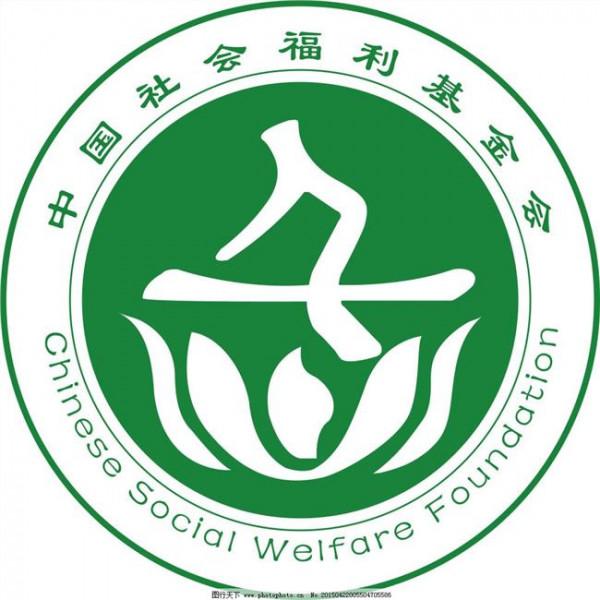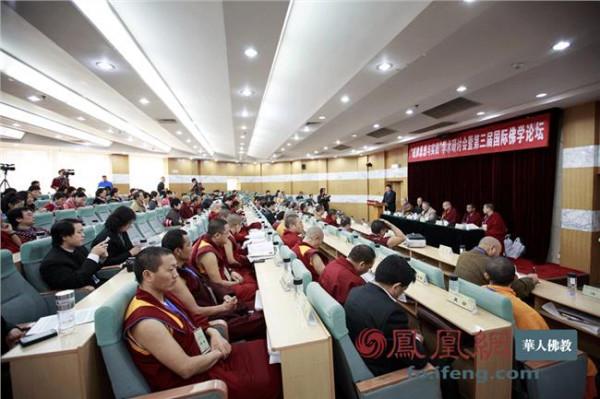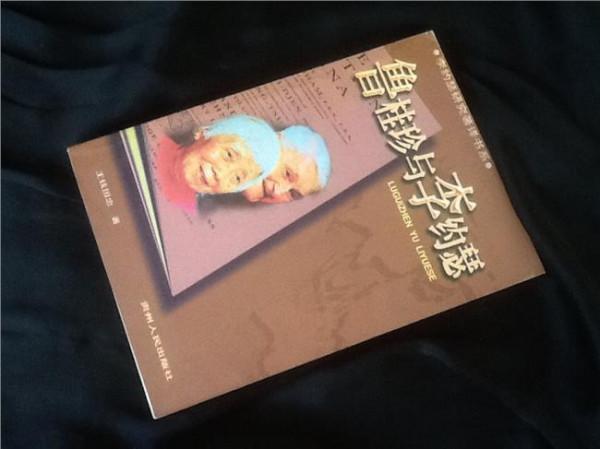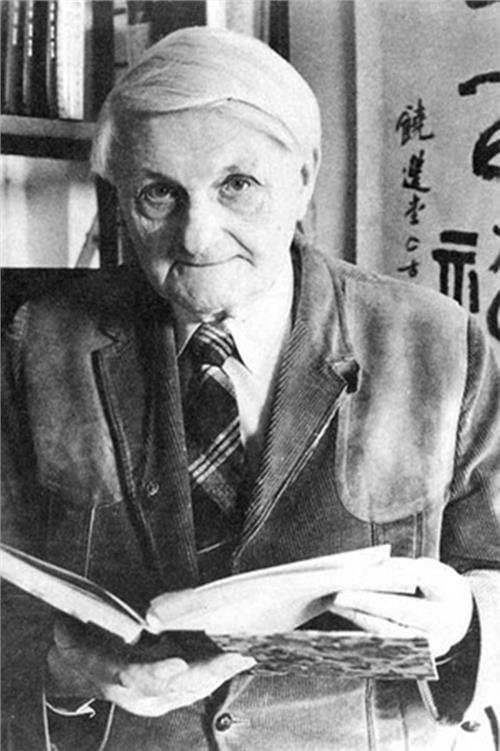李约瑟《中国科学技术史》“作者序”英文原文与中译文
李约瑟《中国科学技术史》“作者序”英文原文与全译本中译文 i.李约瑟《中国科学技术史》“作者序”英文原文1
preface for the integral translation of “science and civilisation
in china”, presided over by lu chia-his
-------------------------------------------------------------------------------
it is the greatest of pleasures for me to learn that an integral
chinese translation of “science and civilisation in china” is now going
forward under the editorial direction of my old friend, lu chia-hsi.
earlier translations were done, both in beijing and in taipei, but they
were not very complete, and for one reason or another, not very
satisfactory.
it is a wonderful thing to reflect that all the riches
which i was able to discover in the relations between china and the
western world will now be available to chinese readers in their own
language.
if i were to try to pin-point the most essential feature of such
comparisons, i would say that it was the comparative method.
of course
there are many other requirements, for example one must be able to read
chinese as well as many western languages, and one must have a good
grounding which makes one realize that not every book was
written at the date which it purports to be from.
but a good
understanding of the comparative times of discoveries and inventions in
china and the western world is quite indispensable.
for example, it was not that many chinese scholars did not know
quite well the book of su sung, written in +1094, hsin i hsiang fa yao
(new design for making armillary sphere and a celestial globe rotate automatically, i.
e. for an astronomical clock).they were very familiar
with this book, but it never struck any of them as odd that it should
contain a description of an escapement, because nobody realize that
2
there was no such thing in europe before +1300 approximately.
an
escapement is a device for slowing down the rotation of a wheel so that
it keeps time with man's primary clock, the diurna1 revolutionof the
starry heavens.
this is done by the cutting up of time into very short
equal intervals.
the fact that the motive power was derived from water
or mercury flowing into buckets on the rim of a wheel from a constant-
level tank, while in europe later on it was derived from a falling
weight, has nothing to do with the question at all.
the water-wheel
link-work escapement of china preceded the verge-and-foliotescapement
of europe by at least 200 years, and i still feel that it was a case of
what has been called“stimulus diffusion”.
my suggestion is that people
in europe said to each other “far away over there, in the east, men have
found out how to slow down a wheel by cutting time into very smallequal
intervals.
why can’t we do this too?” and so they proceeded to invent
the verge-and-foliot escapement, using a falling weight as with its
greek antecedents.
our researches showed indeed that the gap may have been much more than 200 years.
the first water-wheel link-work escapement clock of
which we have adequate records was that made by i-hsing and liang ling-
tsan about +720,so that would make nearer seven centuries than two.
and since there is a possibility that the chinese method was used by
chang heng in the later han period, the priority of the chinese water-
wheel link-work escapement over tile verge-and-foliot escapement of
europe might well be nearer thirteen centuries than seven.
all this
bears out the suggestion that any chinese who had come to europe in the
+9th century would have found it a rather backward place.
however this
3
may be, it is clear that it was really essential to have a comparative
outlook so that one knew that there was no escapement of any kind in
europe before about +1300, the time of dante.
the same thing is true of the standard method of interconversion of
rotary and longitudinal motion, namely the wheel,the eccentric crank,
the connecting-rod and the piston-rod, such as may be seen in every
steam locomotive of the present day, and even in the internal combustion
engine when stripped down.
machines anatomically similar to these are illustrated in allthe relevant chinese books from the time of wang
chen’s nung shu (treatise on agricu1ture) onwards (+1313), not only for metallurgical bellows, but also for operating flour-sifters, or bolting-
machines, and any other machinery requiring a longitudinal motion.
the
differences is indeed that the source or power was the water-wheel, while
in the prime motors of europe, the force of steam was applied to the
piston, but otherwise the set-ups were morphologically the same.
the
chinese machines converted rotary motion into longitudinal motion, because they started with the water-wheel, whereas the european machines converted longitudinal into circular motion, but in all other respects they were
identical.
the oldest drawing in europe which depicts the whole set-up
dates from about+ 1445 and is by antonio pisanello.
it should a pair of piston-pumps operated by rocking levers, raised and lowered by
connecting-rods from two cranks fitted 180 apart on the two side of an
over-shot water-wheel.
so the ad-pistonian arrangement must have come
in europe a long time before the ex-pistonian one.this last indeed was
patented by james pickard in +1780.
4
one hundred years or more e1apses between the pictures in wang
chen's book and the drawing of antonio pisanello, but the constituent
parts of the chinese machine went back far beyond the date of +1213.
the crank makes its first appearance as the handle of a built-in
winnowing-fan machine in farmyard models of the han period (-2nd century
to +2nd century).
then a connecting-rod becomes attached to it in the
nan chao period (between +420 and +589) as a device to allow several
farmers to work at the same quern.
*then, going backwards from -1313,
we find a painting of the +10th century entitled“the water-mill at thesluice-gate entrance”.
this was the work of wei hsien of the southern
t'ang period, about +965, and must be the oldest painting, extant today
of the “water-pusher’’(shui phai), as the machines of the nung shu type
were called.
now,however, this machine, converting rotary to longitudinal
motion, appears to have existed in +547.
for that is the date or the
loyang chhieh-lan chi, an account of the wonders of the monasteries of
loyang.
it depends on the single character po, which means a bolting-
machine or a sitting-machine, operated by water-power.
there seems to
be no way in which this could have worked apart from the conversion of
rotary into longitudinal movement,in the middle +6th century is the
earliest date at which we have evidence of it today.
again, many chinese scholars undoubtedly knew the description in
the nung shu,but no one was conscious of the fact that pisanello’s
* this, it should be noted, was an “ex-pistonian” device, like the
later engines of europe, because it converted longitudinal (push-
and pull) motion into rotary motion.
5
drawing came a hundred years later, and now we know that the chinese
priority in this machine is more like 900 years.
i have given these two
examples to show how in machinery the use of the comparative method is
all-important.
both these examples are taken from mechanical
engineering, butother subjects such as astronomy or medicine would prove
the point equally well.
during the past thirty years there has been an explosion
of new knowledge and understanding about the part played by china and
chinese culture in the ancient and mediaeval history of science,
technology and medicine.
it should indeed be a great source of
legitimate pride to the chinese people that they so early among the
nations of the whole world in the investigation of nature and its
application for human benefit.
finally, i could not end without paying a tribute to mychinese
collaborators.i have always said that the range of knowledge required
in this work is so vast that little could be done by either chinese or
westerners alone ; it has to be a joint effort.
therefore i should like
to thank deeply dr lu gwei-djen, dr wang ling (wang ching-ning) and
dr ho peng-yoke (ho ping-yu)and dr huang hsing-tsung - to name only
four collaborators -for the creative help and insight they have given
over the years.
joseph needham
ii. 李约瑟《中国科学技术史》全译本“作者序”中译文
“作者序”——为卢嘉锡主持翻译出版的《中国科学技术史》全译本而作
《中国科学技术史》中文全译本将由我的老朋友卢嘉锡主持问世,这对我是莫大的喜讯。
早些时候,北京和台北都曾有译本,但不很完全;由于种种原因,也并非尽如人意。我在研究中国与西方关系方面所发现的全部宝藏,将能以中国人自己的文字与中国读者见面,真可谓猗欤盛事。
如果要让我明确指出,中西关系研究的最主要特点是什么,我就会说是比较法。当然,还有许多别的要求。例如,必须能阅读中文和多种西方文字;必须具有能看出并非每一部著作都符合人们所声称的写作年代的良好的语文学基础。
然而,绝对不可缺少的要求是,要能充分理解中国和西方许多发现和发明的年代差异。
例如,许多中国学者并非不知道苏颂在1094年撰著的《新仪象法要》[自动浑仪和浑象(天文钟)的新设计]。他们很熟悉这部著作,但却无人由于书中描述了擒纵机构这种巧妙的装置而产生强烈的印象,因为他们根本没有想到,迟至公元1300年左右,欧洲还没有类似的设计。
擒纵机构是一种减低轮速的装置,以便实现它与人类的原始时计(星空的周日视运动)同步。办法是把时间分割为很短而均等的间隔。至于动力来源,究竟是使水或水银从一个液面恒定的容器(平水壶)流入轮边的许多水斗(受水壶)中去,还是象后来欧洲那样,来自下降的重锤,则完全与本题无关。
中国的水轮联动擒纵机构,领先于欧洲的立轴横杆式擒纵机构至少二百年。我至今仍然觉得,这就是所谓“激发性传播(stimulus diffusion)”的例证。
我猜想,当时欧洲人曾互相传告:“在遥远的东方,人们已经找到办法把时间分割为很短而均等的间隔,以减低轮子的转速。我们为什么不照办呢?”于是,他们利用希腊早就使用的重锤,着手发明了立轴横杆式擒纵机构。
我们的研究表明,这一年代差距,可能远远超过二百年。现有足够资料证明的第一个水轮联动擒纵机构,是一行和梁令瓒在公元720年前后制成的。因此,差距就不是两个世纪,而是将近六个世纪。由于东汉张衡有可能采用过类似的方法,因而,中国的水轮联动擒纵机构,就有可能领先于欧洲的立轴横杆式擒纵机构近十二个世纪。
这一切意味着,如果早在公元9世纪有中国人来到欧洲,他就会发现这是一个相当落后的地方。无论情况如何,有一点很清楚:比较的观点的确至关紧要。人们有了它才能认清,直到1300年以前,也就是在但丁时代以前,欧洲还没有任何种类的擒纵机构。
关于旋转运动与直线往复运动相互转换的标准方法,情况也是这样。
这种装置包括在今天的蒸汽机车甚至内燃机上都可见到的转轮、偏心曲柄、连杆和活塞杆。从1313年王祯的《农书》开始,在一切有关的中国著作中,都有结构与此类似的各种机械的插图与说明。由它们驱动的不仅有冶金鼓风器,还有筛粉机(面罗、水打罗等)以及其他需要直线往复运动的机械。
差别只在动力来源不同:中国是用水轮驱动,欧洲的原始发动机则以蒸汽力作用于活塞。至于结构方面,其形态大致相同。中国机械把圆周运动转换成直线运动,因为一开始使用的就是水轮;反过来,欧洲机械则把直线运动转换成圆周运动;两者在其余各方面基本上完全一样。
约在1445年,安东尼奥皮萨内洛(antonio pisanello)绘制的一幅图,是欧洲有关这种机械整体结构的最早的绘画。
图中有一对活塞泵,由摇杆操纵,摇杆则靠连杆上下运动,而连杆是由安装在上射水轮两侧相距180°的两个曲柄带动。因此,“推动活塞”装置(ad-pistonian arrangement)在欧洲出现,肯定比“活塞推动”装置(ex-pistonian arrangement)要早得多。
事实上,在1780年“活塞推动”装置才由詹姆斯皮卡德(james pickard)获得专利。
从王祯书中的插图到安东尼奥皮萨内洛的绘画,相距一百年或者更长一些。
但是,中国机械中的许多构件,都可以追溯到比1313年早得多的年代。
曲柄最早以手柄形式出现在汉代(公元前2世纪至公元2世纪)明器农家庭院中的整体式风扇扬谷机上。
到南朝(420-589年)时,又加上了连杆,使几个人能共同推动一盘人力磨1)。由1313年上溯,我们找到公元10世纪的一幅画,题为“闸口盘车图”。这是南唐卫贤的作品,约作于公元965年。这肯定是所谓《农书》型机械中有关“水排”的现存最古老的绘画。
然而现在看来,这种把旋转运动转换成直线运动的机械,公元547年即已存在了。这是《洛阳伽蓝记》的成书年代。该书记载了洛阳寺院中的奇观。关键是一个“簸”字。它指的是由水力驱动的筛粉机。看来,除非把旋转运动转换成直线运动,否则它是无法工作的。因此,现有资料表明,公元6世纪中叶是已经存在这种机械的最早年代。
再提一下,很多中国学者无疑都了解《农书》中的描述,但却无人意识到这一事实——皮萨内洛的画晚出了一百年。现在我们知道,就这类机械而言,中国人更可能领先了九百年。我举以上两个例子说明,在机械方面,运用比较法是多么重要。
它们还只是机械工程上的例子。其他学科如天文学和医学,也能充分证明这一点。
关于中国和中国文化在古代和中世纪科学、技术和医学史上的作用,在过去30年间,经历过一场名副其实的新知识和新理解的爆炸。
对中国人来说,这确实应该是一个理所当然值得自豪的巨大的泉源,因为中国人在研究大自然并用以造福人类方面,很早就跻身于全世界先进民族之林了。
最后,我不能不在结束这篇序文之前赞颂一下我的中国合作者。
我经常说,这项工作所要求的知识范围极广,单由中国人和西方人来承担,几乎不可能有所作为,只能依靠我们的共同努力。因此,请允许我向鲁桂珍博士、王铃(王静宁)博士、何丙郁博士和黄兴宗博士——这里,我仅仅举出四位——致以深切的谢意,感谢我的合作者们多年来给予的创造性帮助和提供的许多真知灼见。
李约瑟
1988年5月10日
(刘祖慰译 袁翰青 卢嘉锡 校)
_________________________________________
1) 应该注意,这是“活塞推动”装置,与后来欧洲的发动机相仿,因为它把直线运动(推和拉)转换成旋转运动。
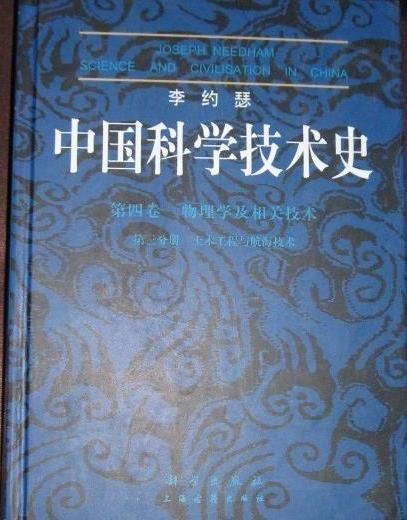



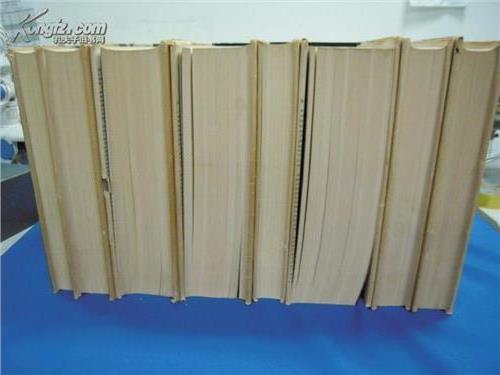
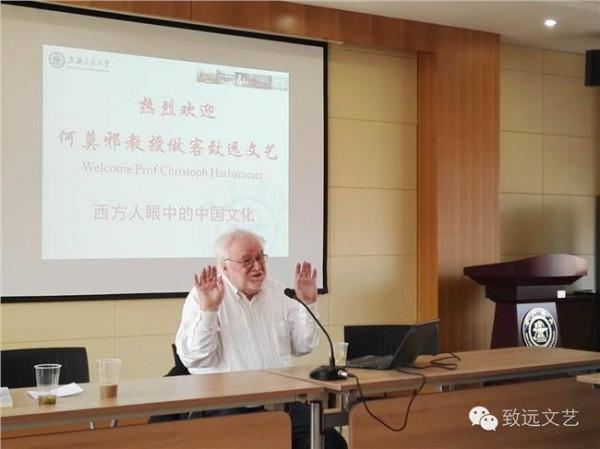
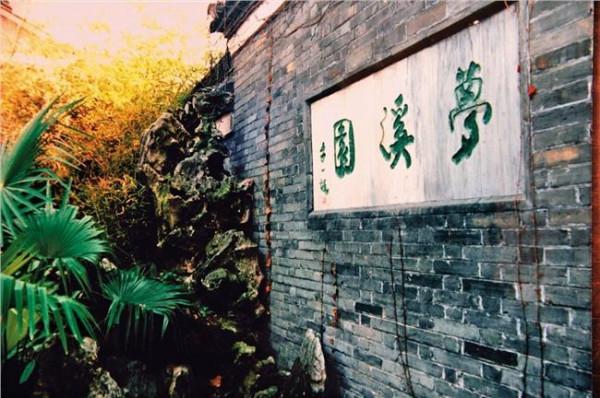
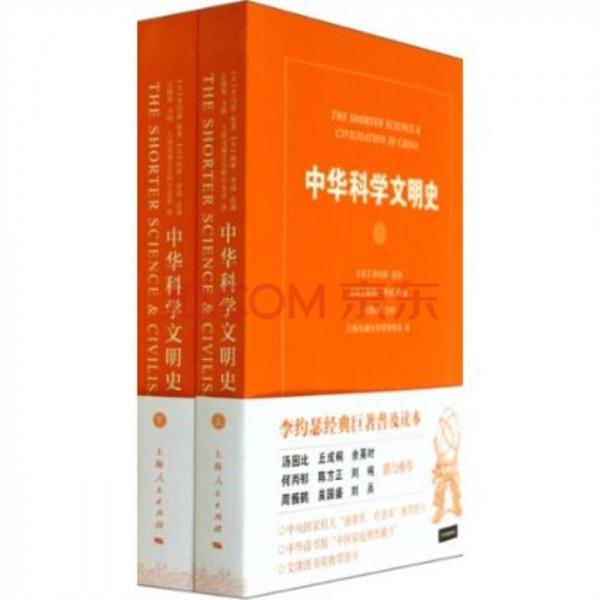
![中国科学技术史李约瑟 [中国科学技术史] (导论) 李约瑟 扫描版](https://pic.bilezu.com/upload/3/81/381ef048ed20035e96fd593ce8454280_thumb.jpg)
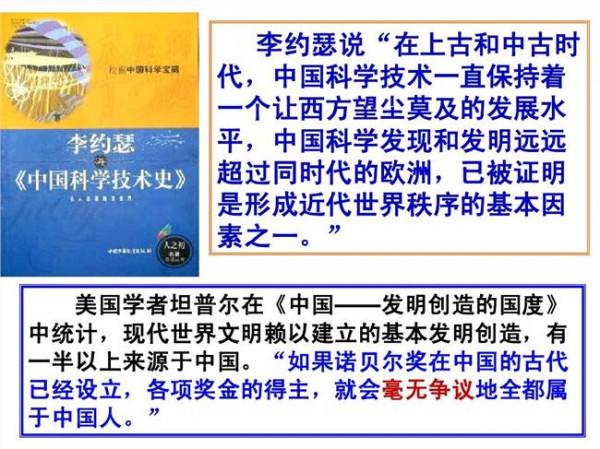
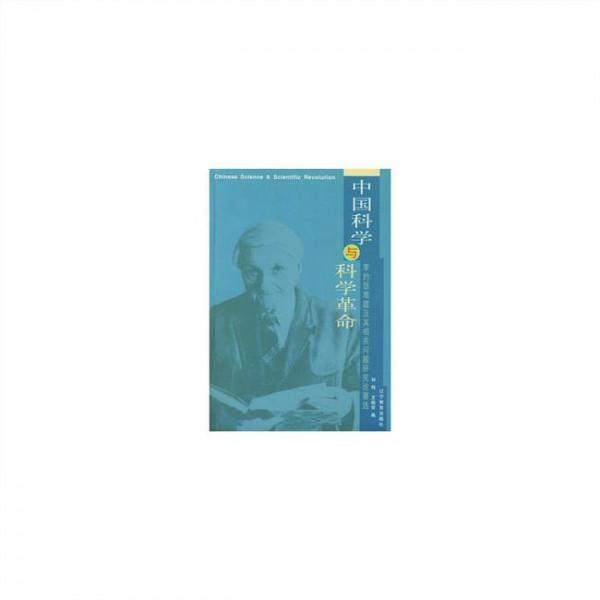
![>《中国科学技术史》scienceandcivilisationinchina李约瑟扫描版[pdf]](https://pic.bilezu.com/upload/a/54/a54d9574839038f3b38951c686698925_thumb.jpg)
![>李约瑟全名 [中国缘·十大国际友人评选]李约瑟:让中国古代科技扬名世界的人](https://pic.bilezu.com/upload/d/73/d73e23c9f21c443aa95055b363a945fa_thumb.jpg)
